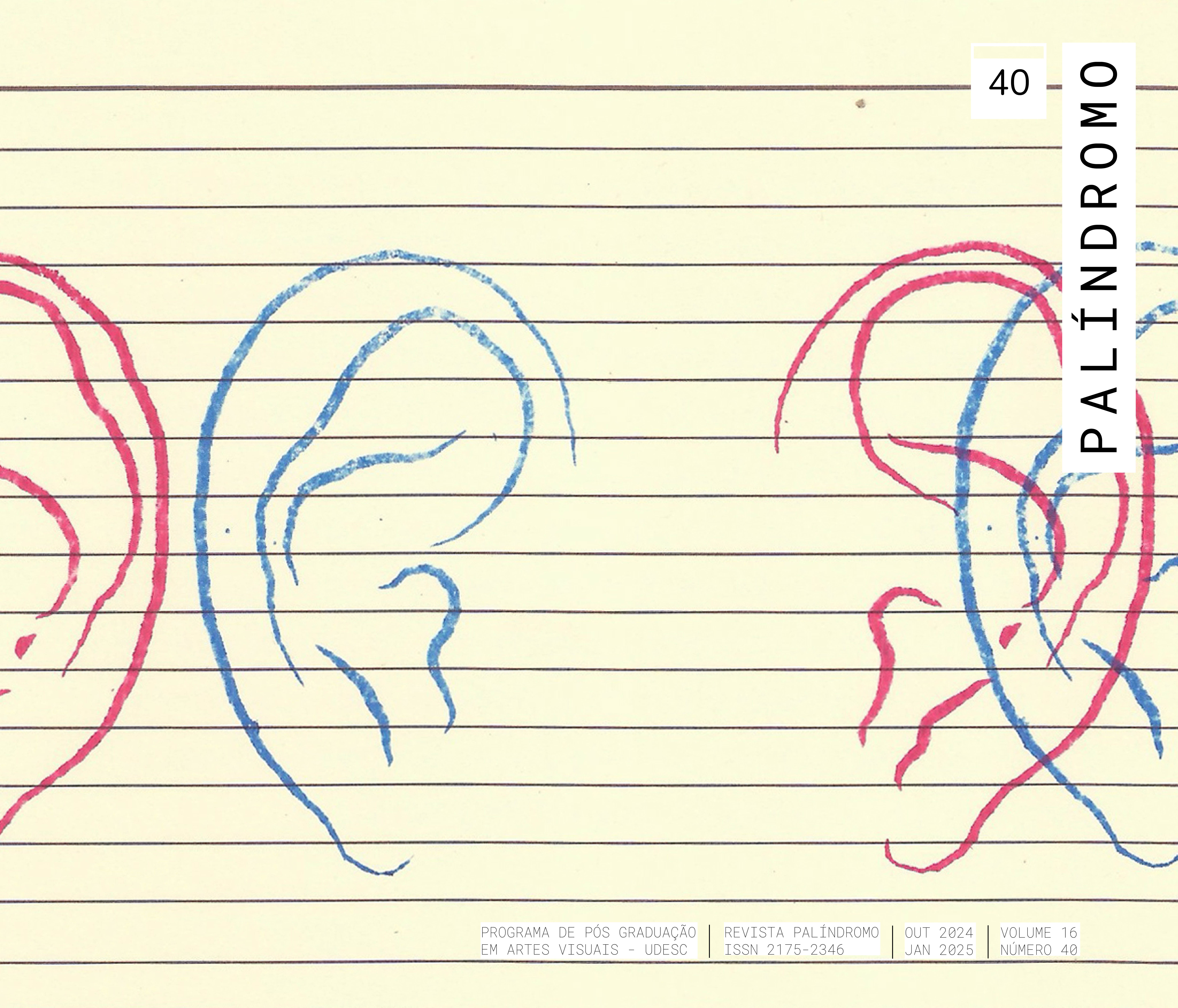Remarks on Sound Stallation
DOI:
https://doi.org/10.5965/2175234616402024e0002Parole chiave:
Sound Art, Sound Installation, Sound Sculpture, Space, Site-specificAbstract
This text explores the evolution of sound art from its origins to contemporary practice. Focusing on sound installations and sculptures, the author distinguishes the sound instalation art from broader sound art practices. The importance of space in defining sound art is emphasized, contrasting it with music and other audio-based art forms. The text traces the historical development of sound installations, highlighting key figures and movements, while also critiquing recent trends that prioritize technology over spatial experience. A clear distinction is drawn between sound art and sound installation art, with the latter being defined as the creative use of sound as a material within a specific space.
Downloads
Riferimenti bibliografici
MOTTE-HABER, Helga de la (org.). Klangkunst. Tönende Objekte und klingende Räume. Handbuch der Musik im 20. Vol. 12. Laaber: Laaber-Verlag, 1999.
NEUHAUS, Max & LOOCK, Ulrich. Interview [Milan, 1990]. In: NEUHAUS, Max. Sound Works. Vol. 1. Ostfildern: Cantz Verlag, 1994.
NEUHAUS, Max. Program Notes. Toronto: York University, 1974. In: NEUHAUS, Max. Sound Works. Vol. 1. Ostfildern: Cantz Verlag, 1994.
STRAEBEL, Volker. Zur frühen Geschichte und Typologie der Klanginstallation. In:
TADDAY, Ulrich (org.). Klangkunst. Musik-Konzepte. Munique: Edition Text + Kritik, 2008.
TITTEL, Claudia. Das flüchtige Material der bildenden Kunst. In: MOTTE-HABER, Helga de la (org.). Sonambiente Berlin 2006: Klangkunst, Sound Art. Exhibition catalogue. Akademie der Künste Berlin. Heidelberg: Kehrer Verlag, 2006.
Downloads
Pubblicato
Come citare
Fascicolo
Sezione
Licenza
Copyright (c) 2024 Carsten Seiffarth

TQuesto lavoro è fornito con la licenza Creative Commons Attribuzione 4.0 Internazionale.
DECLARAÇÃO DE DIREITOS AUTORAIS
a. Os artigos publicados pela revista são de uso gratuito, destinados a aplicações acadêmicas e não comerciais. Todos os direitos autorais são atribuídos à revista. Os artigos cujos autores são identificados representam a expressão do ponto de vista de seus autores e não a posição oficial da Revista Palíndromo. O (s) autor (es) compromete-se sempre que publicar material referente ao artigo publicado no Palíndromo mencionar esta publicação da seguinte forma:
Este artigo foi publicado originalmente pela revista Palíndromo em seu volume (coloque o volume), número (coloque o número) no ano de (coloque o ano) e pode ser acessado em: http://www.revistas.udesc.br/index.php/palindromo
b. Plágio, em todas as suas formas, constitui um comportamento antiético de publicação e é inaceitável. A revista Palíndromo utiliza o software iThenticate de controle de similaridade


